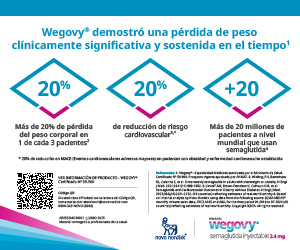Education challenge in aboriginal communities
Keywords:
health, diabetes, aboriginal communitiesAbstract
In the mother tongue of the native peoples, there is not a single word to define health. There are several words, ideas or phrases in which the notions of health can be summarized and thus be able to reach a therapeutic approach in these communities. Today the Province of Formosa is multi-ethnic and multicultural, approximately 7% of its total population belongs to native peoples, currently there are four ethnic groups: Wichi, Qom, Pilagá and Ni-vacle.
Our Provincial Constitution guarantees the right to health of individuals and the community, respecting the different cultural guidelines. The National Health Program for Indigenous Peoples, created by Resolution 1036-E/2016, aims to improve health coverage and accessibility conditions to the Public Health System for Indigenous Communities throughout the country from an intercultural perspective. In 2016, the Provincial Intercultural Health Program was created in our province, which, together with the Provincial Diabetes Program, achieve a therapeutic approach to all the native communities of the provincial territory. Because of this, we detected and addressed the challenges that diabetes entails in these communities, observing mainly multicultural barriers to diabetes education in aboriginal communities. Based on this, some barriers can be seen: a) Language barriers; b) Ethnic particularity; c) Therapeutic resistance in aboriginal communities; d) Problems and limitation of resources.
According to PAHO, interculturality is based on dialogue, where cultures listen to each other, tell each other, and each one takes what can be taken from the other, respecting the particularities and individualities of each community. Through the Intercultural Health Program, local teams working in indigenous communities are accompanied to incorporate the intercultural approach in the strategies of Promotion, Prevention, Cure and Rehabilitation. The actions are carried out systematically and continue to sectorize the territory of the community through a map and an updated census. The approach is carried out through the health couple: Health Agent and Nurse, who are responsible for each sector, in order to provide comprehensive care to families. After los continuous controls and according to telemedicine parameters, with the responsible doctor, the therapeutic approach of the patient is coordinated. Recommendations to address the high number of diabetes cases in indigenous communities include: 1) To analyze successful practices used in countries with low prevalence. 2) Use traditional indigenous foods and practices for prevention. 3) To explore the incidence of diabetes in women compared to men. 4) Increasing reporting of age-specific prevalence of type 2 diabetes to determine physiological changes 5) Conduct future research by and with indigenous peoples. It is not a matter of imposing, subjugating, but of recognizing, respecting and agreeing. It is important to have services with cultural adequacy and intercultural relevance to reduce the gaps in diabetes education in all aboriginal communities.
References
I. Argentina. Pueblos originarios. Disponible en: https://www.argentina.gob.ar/pais/poblacion/originarios.
Downloads
Published
Issue
Section
License
Copyright (c) 2024 on behalf of the authors. Reproduction rights: Argentine Society of Diabetes

This work is licensed under a Creative Commons Attribution-NonCommercial-NoDerivatives 4.0 International License.
Dirección Nacional de Derecho de Autor, Exp. N° 5.333.129. Instituto Nacional de la Propiedad Industrial, Marca «Revista de la Sociedad Argentina de Diabetes - Asociación Civil» N° de concesión 2.605.405 y N° de disposición 1.404/13.
La Revista de la SAD está licenciada bajo Licencia Creative Commons Atribución – No Comercial – Sin Obra Derivada 4.0 Internacional.
Por otra parte, la Revista SAD permite que los autores mantengan los derechos de autor sin restricciones.




























